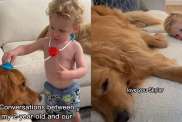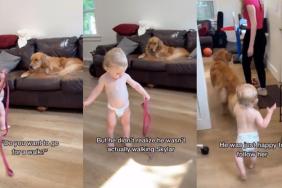“The greatness of a nation and its moral progress can be judged by the way its animals are treated.”
–Mahatma Gandhi (message hanging on the wall of the Corning Animal Shelter)

When Debbie Eaglebarger first walked into the tiny cement dog shelter in her adopted hometown of Corning, California, she was just another nine-to-fiver with a fondness for dogs. What she saw shocked her to the core and, ultimately, changed almost every aspect of her life–her job, her marriage, and how she spent her days.
She saw a windowless room divided into 14 narrow stalls, each barely wide enough for a dog to turn around in. The big dogs had to stand on their hind legs to see over the solid steel doors; the small dogs didn’t have a chance. The pens were filled with feces, the room reeked, and for most of the dogs there was no escape.
“They weren’t allowed outside until their fifth day at the shelter, when they were killed,” Eaglebarger explains. Built as a holding pen, the shelter was treated like one. Up to 86 percent of the dogs who entered the building left in plastic bags.
Five years later, Eaglebarger has almost single-handedly transformed the ‘fill and kill’ pound into a humanely run shelter. The building still resembles a dog jail, but Eaglebarger has added outdoor pens and a spacious play area. The dogs get daily attention and training and take turns accompanying Eaglebarger around town on her errands.
The increase in the adoption rate since she took over? A whopping 1,000 percent.
Choosing the dogs
Eaglebarger had little idea what she was getting into when she applied to become shelter caretaker four months after starting to volunteer there. She did know her new job came with no pay, no benefits, no support staff, and no vacation. The only perk was free use of the trailer that sat next to the shelter.
She also knew she’d have to fit running the city shelter around her full-time job in the county social services department, and for the next three years that’s what she did.
When most of the town was still asleep, she was up walking and feeding the city’s unwanted dogs. When they were fixing dinner, Eaglebarger was walking and feeding the dogs again. And when they were relaxing on weekends, she was cleaning pens, exercising and training the dogs, and finding creative ways to raise money and attract good adopters.
Eaglebarger, age 52, had already made peace with the idea that the dogs would take over her life. When her ex-husband laid down an ultimatum a few years ago, saying “it’s me or the dogs,” Eaglebarger, who has two adult sons now living on their own, chose the dogs.
Throw away pups
Here’s what she hadn’t bargained on: All the suffering she’d see, particularly startling in Corning, which is three hours northwest of the Bay Area, a dog-loving population flush with dog spas and upscale doggy daycares.
Eaglebarger saw brand new puppies who’d been tossed in the county dump. Dogs missing ears and tails after the owner used scissors to trim them. Dogs pitched out of moving cars, over the shelter fence, or tied up and abandoned outside vacated houses. Dogs who spent their entire lives tied up in backyards in every type of weather, ignored and alone.
The emotional demands of such a job are familiar to anyone who works in animal care, and friends say she periodically retreats, exhausted, to her trailer home for a few days at a time to just sleep. But for Eaglebarger, ignoring the suffering around her would be even harder.
Imagining what a “hell hole” can become
Part of what has kept Eaglebarger going is her vision for what her “little hell-hole,” as she calls it, can become. Five years ago she set up a non-profit, called Second Chance Pet Rescue, to raise money for medical care, training, toys, and blankets for the dogs. Ultimately, she’d like to find the funding to build a brand new shelter, and leave the town’s dog-unfriendly barracks behind.
In the meantime, she raised enough money to finally quit her social services job in 2005 and concentrate on managing the shelter. And not a moment too soon, she says: “I just couldn’t do it anymore.”
The break with a steady income comes at a cost. She drives a dilapidated jeep, doesn’t have health insurance, has cashed in her retirement fund, and scrapes by on roughly $1,000 a month so she can put her limited resources toward the dogs. Over the past five years Eaglebarger has taken exactly 11 vacation days.
Shedding the “nutcase” label
Still she easily ticks off why she’s willing to continue. She now has one steadfast volunteer, Pat Panko, who helps her out every week. She has a growing list of supporters, mostly people who’ve adopted her dogs. And many locals have warmed to her over the years.
Once labeled a “radical” and “nutcase,” she’s now praised in the local papers for her dedication, compassion, and resourcefulness. The Chamber of Commerce named her “Champion of the Year,” and a local TV station designated her a community hero. Even people who don’t particularly like dogs appreciate that a humane shelter makes the town look good and saves money in euthanization costs. “Our animal control officers and even the police officers enjoy coming out to the shelter and seeing the dogs,” she says.
Outsiders have taken notice, too. The Animal Farm Foundation, a rescue group based in New York, helped fund a play yard and training so the pit bulls she takes care of can get their Canine Good Citizenship certification. “Despite having very limited resources, she’s done a great job for the dogs,” says the Foundation’s president, Jane Berkey. “We’re very proud to support her.”
Of course, Eaglebarger believes the true reward is seeing former throwaway dogs settled into loving homes. “Nothing is more fulfilling,” she says.
Offering a second chance
During the winter storms that slammed northern California last January, a young dog arrived at the shelter with his leg dangling and broken in four places, but tail wagging. As she has many times in the past, Eaglebarger needled, lobbied, and scraped together funding to give this dog another shot at a happy life. The dog, whom she named Weaver, had his shattered leg amputated. He mended quickly and was soon adopted by a disabled man who saw him on a local TV promotion.
“These dogs just need a second chance and time to heal,” Eaglebarger says. They’ve come to the right place.
—January 22, 2008









